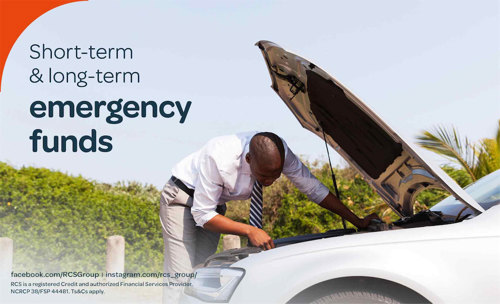Short Term & Long-Term Emergency Funds
10 AUGUST 2023
An emergency fund is a specially reserved amount of finance that is easily and readily accessible to you. The fund can be used to help cover unforeseeable expenses which may be costly if it was not for the fund, which would have had a negative impact on your financial position. Your emergency fund should be readily marked for the purpose of sorting such expenses so that the money does not serve dual or even multiple functions in your portfolio. For example, a lump sum should not be set aside for emergency expenses whilst also being accessible for things such as festive shopping or home improvements.
Your emergency fund should be readily marked for the purpose of sorting such expenses so that the money does not serve dual or even multiple functions in your portfolio. For example, a lump sum should not be set aside for emergency expenses whilst also being accessible for things such as festive shopping or home improvements.
Why You Need an Emergency Fund
One of the most important things you can do to secure your financial security is to have an emergency fund. Emergency savings provide you with an additional way to prepare for unexpected expenses that sometimes come with life. Your fund allows you to access a quick form of money in often difficult circumstances without the need to resort to borrowing from a financial institution.
Short-term Emergency Fund
There are two types of emergency funds that you can explore that suits you best: short-term and long-term. For the short-term emergency fund, you will have cash on-hand to cover costs such as replacing a flat tire or paying your expenses if you get laid off for a short period of time. As the foundation of the short-term fund, your savings should be an amount that’s equal to your highest deductible. For example, your car insurance may have an R2,000 deductible your emergency savings fund should contain at least R2,000 to cover that deductible.
Long-term Emergency Fund
A long term emergency fund would cover you for a few months if you were to find yourself in situations such as being furloughed, becoming unemployed, or another large-scale event (like a pandemic) that were to affect the economy for an extended period of time, as it did this year.
Long-term emergency savings should ideally be equal to three to six months of your living expenses saved up. It might seem like a rather large amount of money that could be used to quickly get rid of short-term financial obligations, but the goal here is to plan for the future. An effective means of saving for this type of budget would be to create a financial budget to identify what your expenses are will help you understand how much you need to save each month.
When should you start saving?
If you have the types of funds available listed above for either a short or long term saving plan, start immediately – unless there are critical financial obligations that you have committed to and cannot afford to neglect them. Here are three helpful steps to get you on your way to saving for your fund:
1. Create a budget and stick to it!
Budgets may seem like a constricting concept, but it doesn’t have to be. It is important to remember that a budget doesn’t tell you what you can’t do—it shows you what you can do. Start off by listing all your monthly income and any expenses - you’ll be able to see how much money you have available so you can be ready to jump into step 2.
2. Set a monthly savings goal.
A monthly savings goal will determine how much you want to set aside each month to continue building up your emergency fund. It is difficult for many people to set aside a portion of their monthly income to save with, but you will reap the rewards in the future when that amount has grown and matured nicely in your account. If you can’t seem to set an amount aside, rework your calculations in step 1 and try again!
3. Adjust how much you save.
You may find yourself a year or more into mastering your savings, maybe it’s time to adjust your savings depending on your current situation. Unforeseen circumstances such as a promotion at work or other instances where unexpected cash flow arises are great examples of adjusting your savings by adding in a little extra each month before the promotion.
When Should I Use My Emergency Fund?
Once your savings have been appropriated into the correct accounts, your next decision is when is a good time to use them, depending on the situation. The recommendation for long-term emergency funds is generally 6-9 months’ worth of saving specifically for instances such as helping you support yourself if you lose your job, get put on reduced working hours, or end up accumulating bills for an unforeseen reason. A long term emergency fund is there to help you cope with bigger expenses.
On the other hand, your short term emergency fund can be used for more immediate circumstances that are out of your control. For example, say your washing machine breaks down, or if you need car repairs – your short term emergency fund provides you with a way to cover these expenses without affecting your monthly budget negatively, and could even stop you from using your credit card to pay for them, reducing your potential debt.
MORE ARTICLES ABOUT
RELATED ARTICLES

Financial Wellness
03 DECEMBER 2025
Stop Digital Violence: RCS Calls for Action as Online Abuse against Women Escalates

Financial Wellness
07 NOVEMBER 2025
Black Friday alert: How AI, deepfakes and smart scams are tricking shoppers

Financial Wellness
29 OCTOBER 2025
